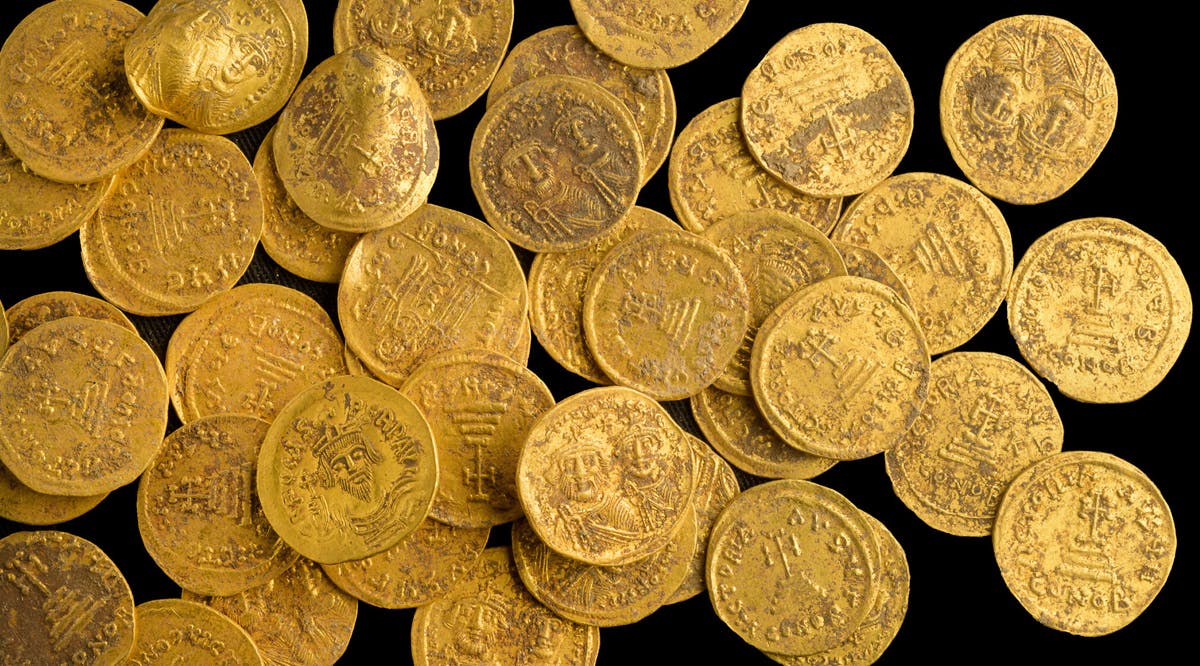
Dozens of Pure Gold Coins Discovered in Secret Cache Dating from Muslim Conquest
Forty-four pure gold coins were recently found hidden in a wall, during excavations at the Banias archaeological site within the Hermon River Nature Reserve in the north of the country, the Israel Antiquities Authority said Monday, October 3.
The hoard, weighing about 170 grams, was found stashed within the base of an ashlar stone wall. Archaeologists assessed that the treasure was hidden by its owner during the Muslim Conquest of the area in 635 CE.
“The discovery reflects a specific moment in time, when we can imagine the owner concealing his fortune in the threat of war, hoping to return one day to retrieve his property,” excavation director Yoav Lerer said in a statement.
“In retrospect, we know that he was less fortunate.” “The discovery of the coin hoard may also shed light on the economy of the city of Banias during the last 40 years of Byzantine rule,” Lerer said.
Some of the coins were identified as being minted by Emperor Phocas (602–610 CE), and others by Emperor Heraclius (610–641 CE). The latest of the Heraclius coins were dated to the time of the Muslim Conquest.
Israel Antiquities Authority coin expert Gabriela Bijovsky said the Emperor Heraclius coins are of particular interest because they depict a time-lapse record of his family. “In his early years as emperor, only his portrait was depicted on the coin, whereas after a short time, the images of his sons also appear,” she explained. “One can actually follow his sons growing up – from childhood until their image appears the same size as their father, who is depicted with a long beard.” (TOI / VFI News)
The suggestions, opinions, and scripture references made by VFI News writers and editors are based on the best information received.
Want to see more from VFI? Follow us on Facebook! Our official Facebook name is Vision for Israel. Follow us there and please hit “like” if you like us.